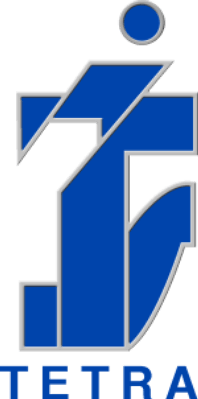Identity and Access Management (IAM) is the umbrella term for the structures and processes within any organization that administer and manage its employees’ access to resources. It is important to note that IAM, strictly speaking, is a conceptual discipline. IAM solutions are the software implementations that enforce an organization’s IAM strategy and policies.
At their most distilled, IAM solutions centralize, connect, and govern access to your systems, data, and resources. Think of them as the brains that oversee an organization’s IT environment. Centralizing identity information for each individual preserves their associated permissions and security to drive and facilitate automated processes. Standardizing and synchronizing your organization’s IAM establishes the creation of an accurate, easily managed database facilitating secure, proper access for all users.
What was the scenario without Identity and Access Management Solutions?
Traditional business technology operated independently because it lacked the interconnectivity afforded to us today. This created disparate data silos that existed exclusively within specific systems. Forget transferring information from machine to machine, it was often confined to individual systems and software applications. Traditional business processes worked around these limitations, requiring excessive effort and paper trails to best ensure proper completion and record keeping.
When organizations rely on siloed resources and data, the resulting lack of interconnectivity constrains usage within the confines of an explicit boundary. For example, HR data’s utility would be limited to the HR system exclusively. Further, siloing often forces the creation of otherwise inefficient business and access processes as workarounds. These formal or ad hoc workarounds are not a remedy, but superficial bandages for broken structural bones.
Many of these workarounds may have once seemed sensible as pre-digital, legacy efforts – such as paper forms requiring running around for five stages of approval. However, the never-ending emergence of new technologies regularly renders them redundant or restrictive.
Problems in today's connected world
Regardless of industry, size, or location, modern organizations require IT resources to complete daily functions: your HR department uses an HR system for employee information; your accounting department uses payroll software; sales use Customer Relationship Management (CRM) systems; marketing uses Content Management Systems (CMS); everyone accesses local or cloud storage for file and data sharing; and so on.
Utilizing these resources requires user accounts associated with individuals. An employee must authenticate their identity to access a user account – often by entering the username and password credentials. User accounts must be created, maintained, and deactivated throughout their lifecycle, which most often correlates with the duration of that user’s employment.
Effectively leveraging IT resources amidst today’s expectations of immediacy requires instant access to applications, files, and data at any time, from any device, in any location. On top of all that, the never-ending onslaught of malicious digital entities in a world more connected than ever complicates traditional processes and access.
Thriving in today’s business world depends on optimized operations, data, and security. Inefficient processes add up fast to slow you down. Manually managing user account creation and provisioning, ad hoc requests, authentication, access reviews, security efforts, and more burdens not only your IT staff but every employee who utilizes IT resources. Combining these challenges with increasingly demanding regulatory compliance (e.g. HIPAA, SOX, FERPA) and breach risks, every enterprise currently contends with the most rigorous environment ever.
Failing to enact strict processes, policies, and security measures create chaos. Without such, your personnel’s access rights can quickly spiral out of control and, in turn, complicate everyone’s understanding of roles and responsibilities. This disorganization creates security risks, oversights, and negligence with the potential for serious ramifications.
An IAM solution is the best platform you can give to set your organization up for success. Automating your back-end management processes ensures proper execution of critical and menial tasks, provides safe access, and reclaims the ability to reprioritize your people with more important tasks.
What are the benefits of Identity and Access Management Solutions?
- Centralize access control: Too much access to certain systems is risky, while too little can hamper productivity and frustrate users. IAM strikes the perfect balance by letting you set centralized policies for the right access privileges.
- Lower chances of data breaches: With features like SSO and MFA, your employees will no longer have to remember multiple passwords. Instead, they’ll be able to prove their identity using evidence-based authorization such as answering a personal question that only they would know. IAM also comes equipped with advanced encryption tools to protect sensitive data, reducing the risk of compromised user credentials.
- Achieve regulatory compliance: Businesses today must meet the constantly changing regulatory requirements concerning data access governance and privacy management. IAM was designed with just that in mind and provides control over who can access data and how it can be used and shared.
- Reduce IT costs: IAM automates and standardizes many aspects of identity, authentication, and authorization management. This means you’ll be able to minimize significant labour costs associated with keeping your business environment secure.
- Improve user experience: Customers today interact with your company across multiple channels, whether in the cloud or via third-party applications. This is where IAM helps provide a better experience through SSO, self-service capabilities, and unified customer profiles that make communication processes quick and easy.
We are one of the partners of OpenIAM and provide a full range of their services. Contact us to learn what OpenIAM services might look like for your organization. Allow our representative to either call you in 24 hours or e-mail you for more details about our services - Click Here





